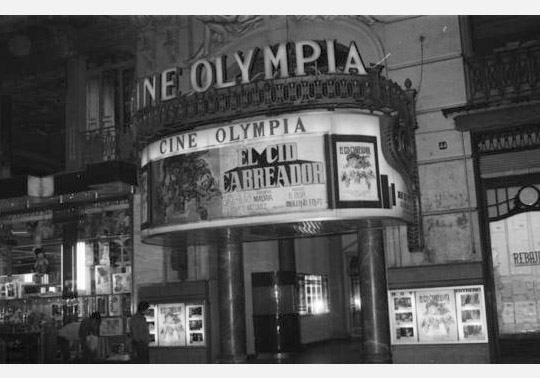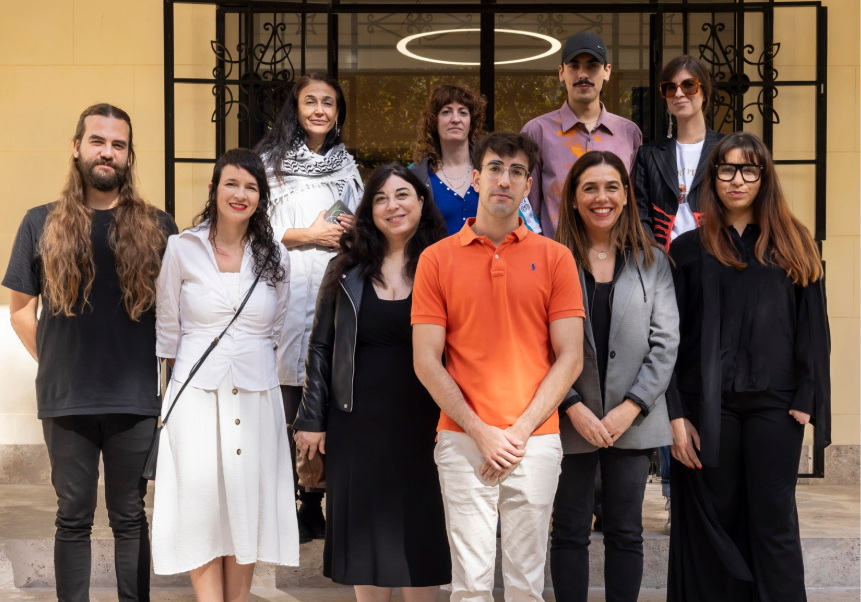The trajectory of the Olympia Theatre, reviewed in an exhibition in the Cultural Centre La Nau
- November 10th, 2016

On Friday 11 November at 19 hours, the UV opens in the Open Room of the Cultural Centre La Nau the exhibition called ‘Olympia Theatre: A hundred years on stage’, and it will be opened to the public until the 8 January. Organised by the UV and the Olympia Theatre, the exhibition reviews the history of this theatre through a hundred pieces including photographs, posters, brochures and other materials from private and public collections.
It is the first time that an exhibition about this theatre is done, and it means an important chapter in the cultural identity of the city from its witness role and active part of the evolution of entertainment industry and the public taste in the modern and contemporary Valencia.
The Olympia Theatre opened it doors on 10 November 1915, and from then it kept working uninterruptedly. And in private hands, something that makes a difference to the oldest theatre rooms that still survive in our city. Although it was opened as a theatre, in 1923 it turned into a cinema due to an increased profitability and the interest in celluloid, among others. Seventy-one years before, it went back to a theatre programme because of the loss of spectators in traditional cinemas.
Commissioned by the cultural manager and historian Antonia Picazo, this exhibition “means a recognition of the history of Olympia and, at the same time, it constitutes an opportunity to have access to works never shown to the public”, says. Is the case of a modernist poster by the artist J. Bellver, property of the collector Díaz Prósper, or theatre and cinema programmes by the collectors Rafael Solaz and Juan Monsell. There are also included photographs of photojournalism pioneers such as Barberà Massip, Lázaro Bayarri or Luis Vidal, as well as cultural photojournalism experts on the post-war era such as Antonio Calvo and, more recently, José Marín, Daniel García Sala, El Flaco, Miguel Lorenzo, José Aleixandre, Manolo Molines or María Ángeles Valenciano. For its part, the Valentiga association collaborated on documentation works.
The exhibition shows in a chronological way all the great moments lived by the Olympia, starting with the quick consecration of the room as a trending theatre and a focus of modernity in the city, to then continue with its cinematographic period. A period in which the Olympia became one of the busiest cinemas in the city, first under the direction of the entrepreneur Ángel Pérez del Vall, and from the 50s, under the direction of Enrique Fayos.
The exhibition is closed with a selection of captured moments in front of its scenario in the last thirty years, as a way of summarising the more than five hundred prestigious companies that passed through it since its transformation, again, into a theatre. The theatre became one of the most important in the State by its number of spectators, with the incorporation to the direction of Enrique and María Ángeles Fayos.
Beyond the skills shown by the successive entrepreneurs responsible of the Olympia to unify the artistic results with the commercial results, the exhibition enables to appreciate a normally unnoticed aspect: the close complicity with the Valencian cultural fabric maintained by all of them. The Valencian audiovisual industry benefited from this support during the first third of the century, headed by Cifesa, as well as companies and artistic creators with skills to bring together a wide audience and ensure the budgetary equilibrium, essential condition for the private initiative, as was the case.
Categories: Exposicions , Centre cultural La Nau


.jpg)













